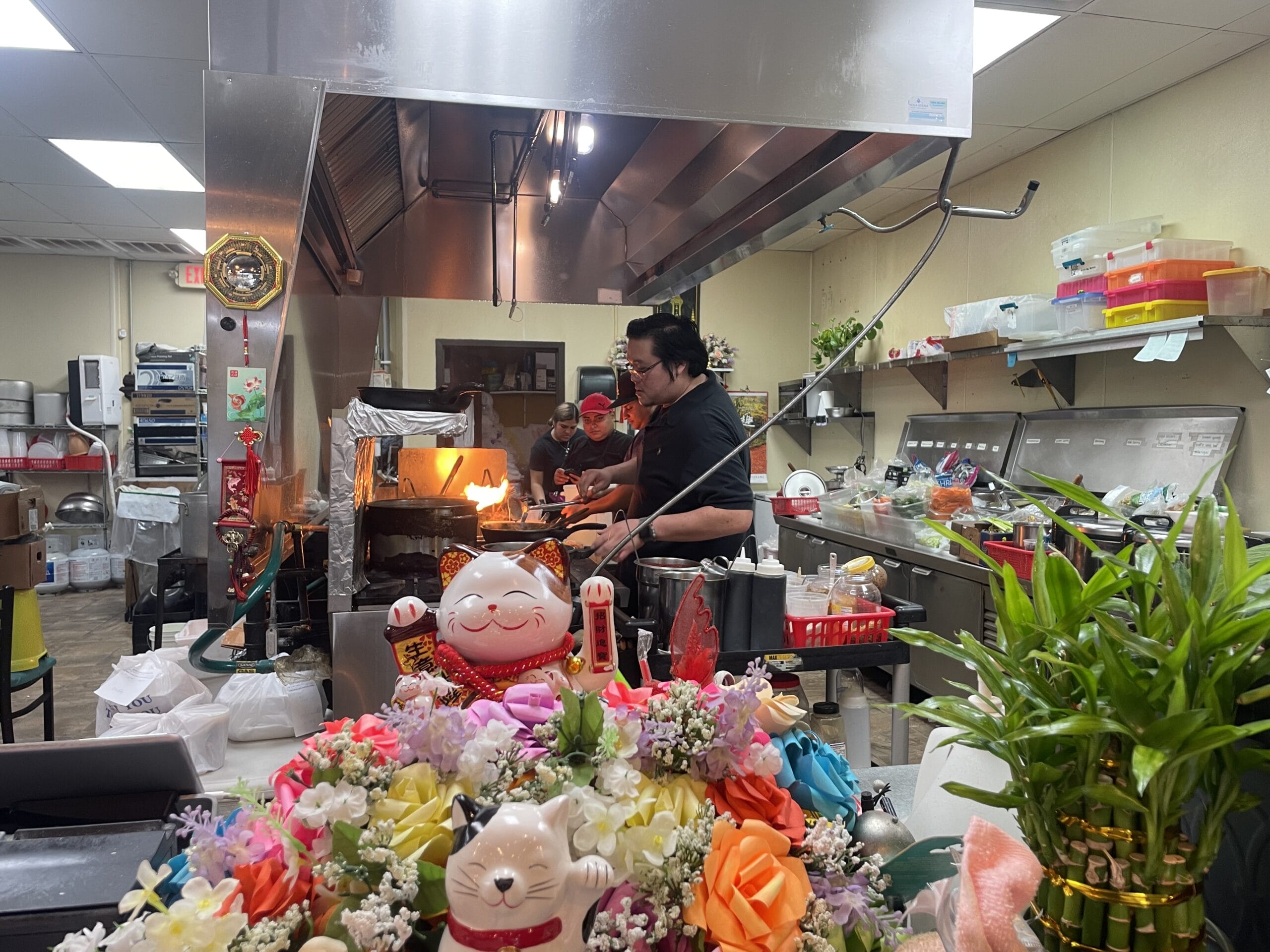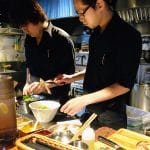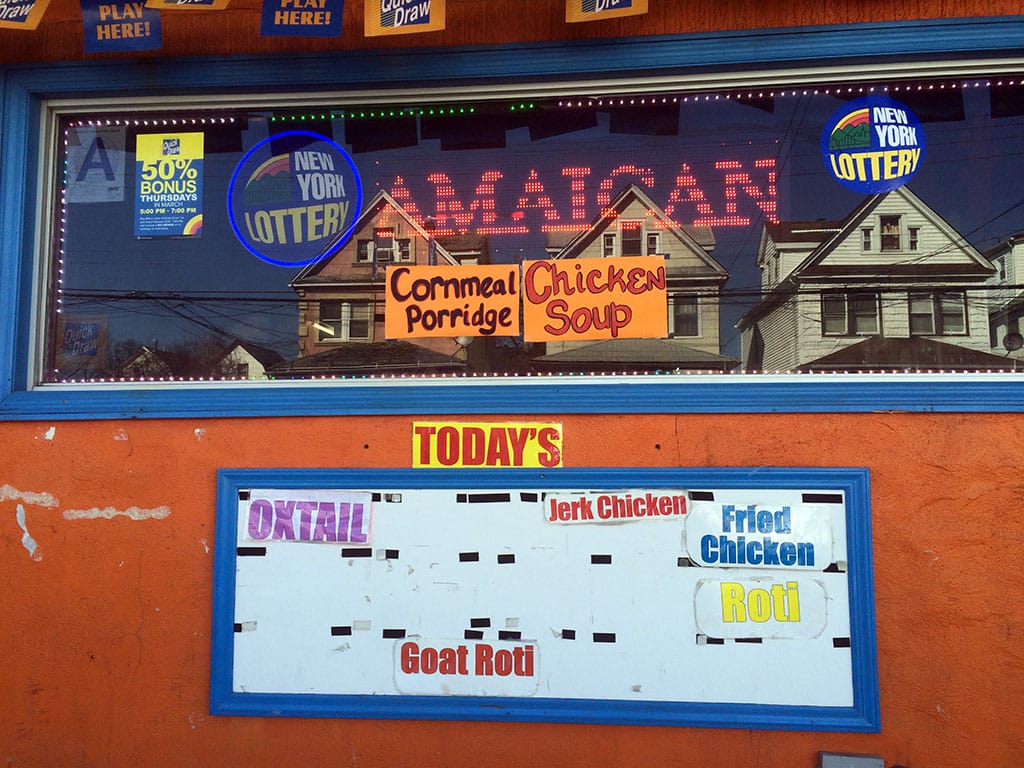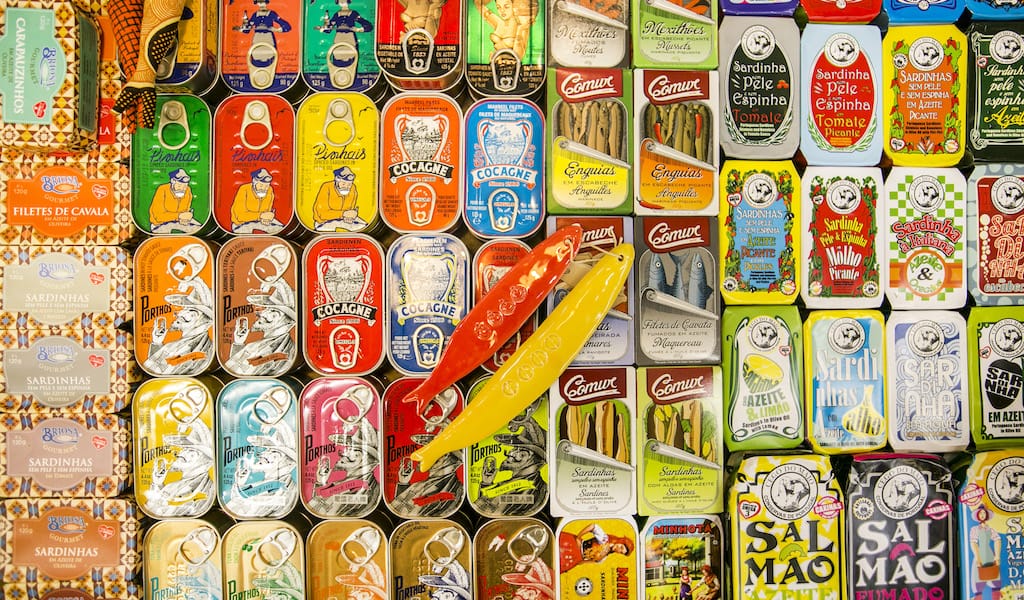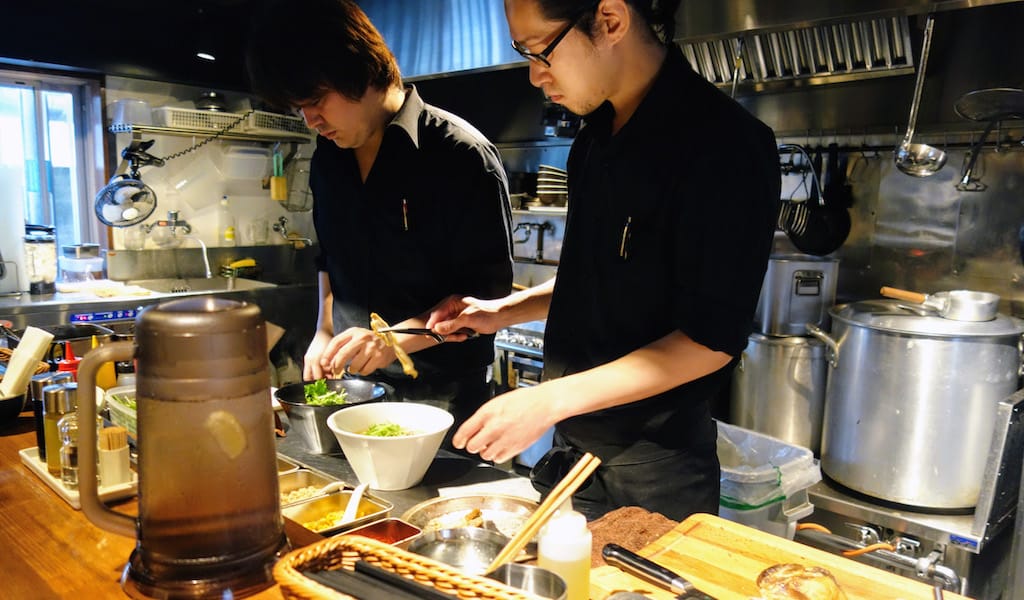Our friends were puzzled: back after two years away from our hometown of New Orleans, we were heading to a far-eastern suburb of the city to eat. With so many blessed dishes in the city center, why were we out in Chalmette?
The answer was simple: Our destination was Secret Thai, a restaurant well worth the trip. Its location may seem odd at first, but it only adds to the allure of making a pilgrimage past the city’s industrial canal and the Lower Ninth Ward. About five miles east by way of the Mississippi River’s bend from the French Quarter, when the condensed city spills into strip malls, Secret Thai sits along another bend on Judge Perez Drive, St. Bernard Parish’s main commercial artery.
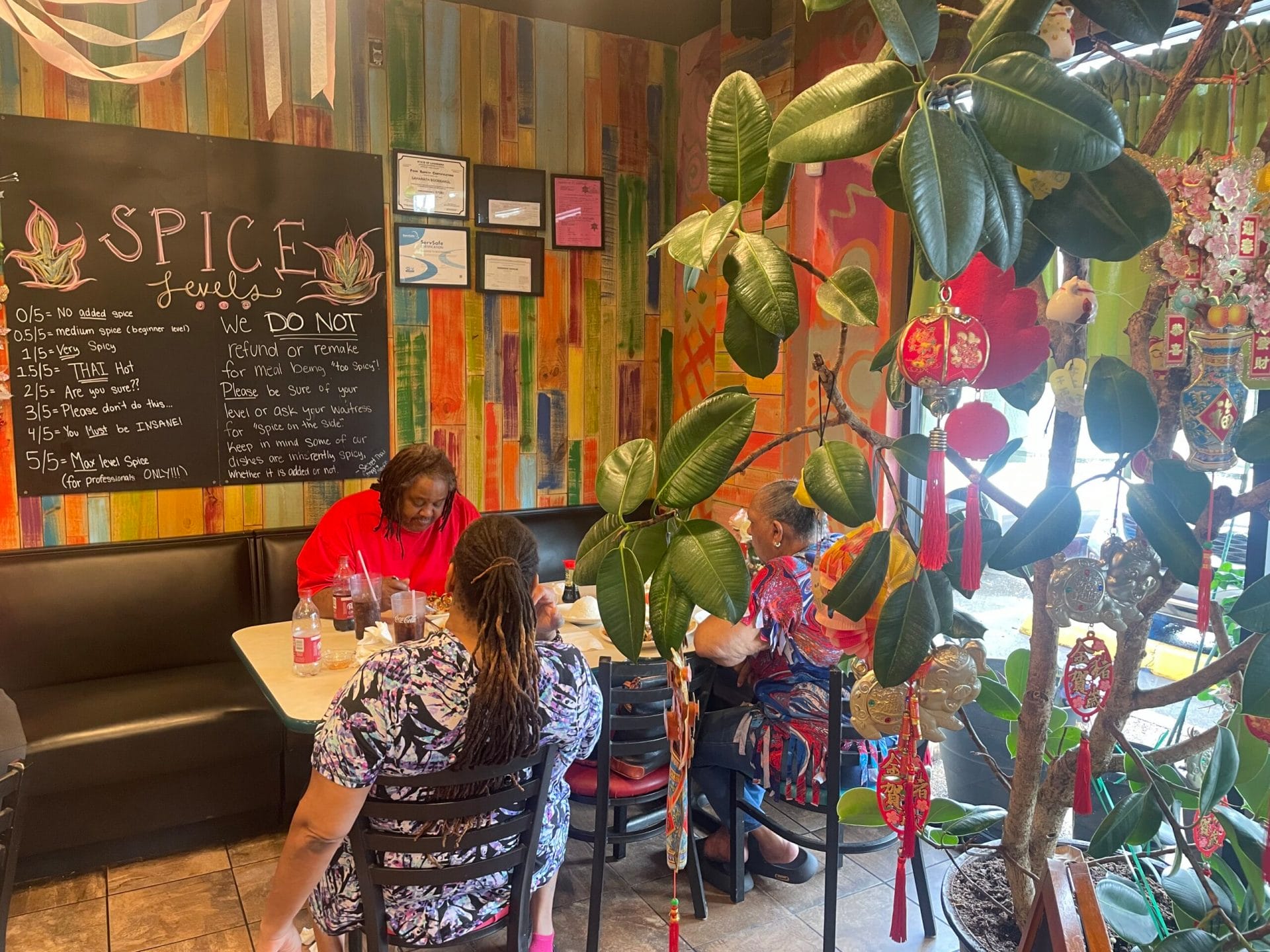
Inside the strip mall, neighbored by a pawn shop, a nail salon and Latin grocery, we entered Secret Thai during the Saturday lunch rush. Louisiana was in the middle of a local election runoff, and locals from all walks of life milled about wearing “I voted” stickers featuring a brown pelican, the Louisiana state bird, while waiting for their food. The walls around them were decorated with handprinted folding fans depicting bucolic scenes, rows of orchids, and a corner shelf of children’s stories (including our personal favorite Where the Wild Things Are). Tropical prayer plants spilled out of a Dr. Pepper cooler as ornaments of smiling cats riding rainbow-colored fish dangled from a large rubber plant.
Plastered on the corner wall was a disclaimer that there would be no refunds or remakes for meals being deemed too spicy. Secret Thai follows a five-point heat level scale – from no added spice to a warning that states it’s for professionals only. A footnote highlights that some dishes are “inherently spicy,” even before any requested added spice, washing the restaurant’s hands of any responsibility for what was to come.
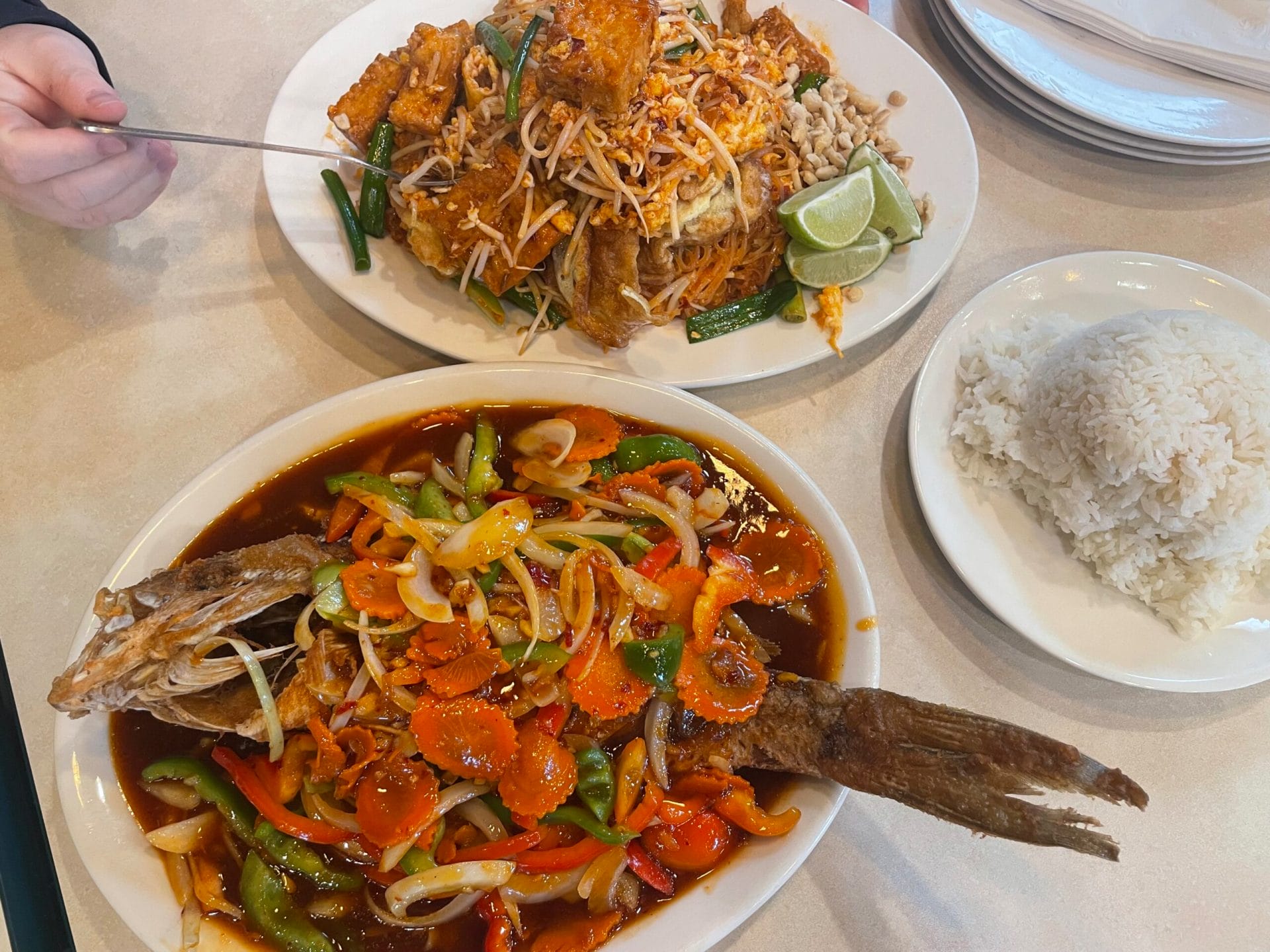
Customers around us had ordered large platters of the classics, including shrimp massaman curry and freshly shredded papaya salad. We opted for the plah sam rot, translated as “three flavors of fish”: A whole red snapper from the Gulf of Mexico, fried to a crisp and topped with house chili sauce, carrots and peppers. The heat hits first, followed by a sweet and sour escape. We then tried the pad thai pratu pee, named after the Ghost’s Gate neighborhood in Bangkok, where this specific style of noodle, wrapped in a thin layer of egg, is served.
All the while, we sucked down 24-ounce Thai iced teas that provided us with sweet respite after spicy mouthfuls of chilies. As the lunch rush began to subside, Saharath Boonsakul, who runs the restaurant with his mother, joined us at our table.
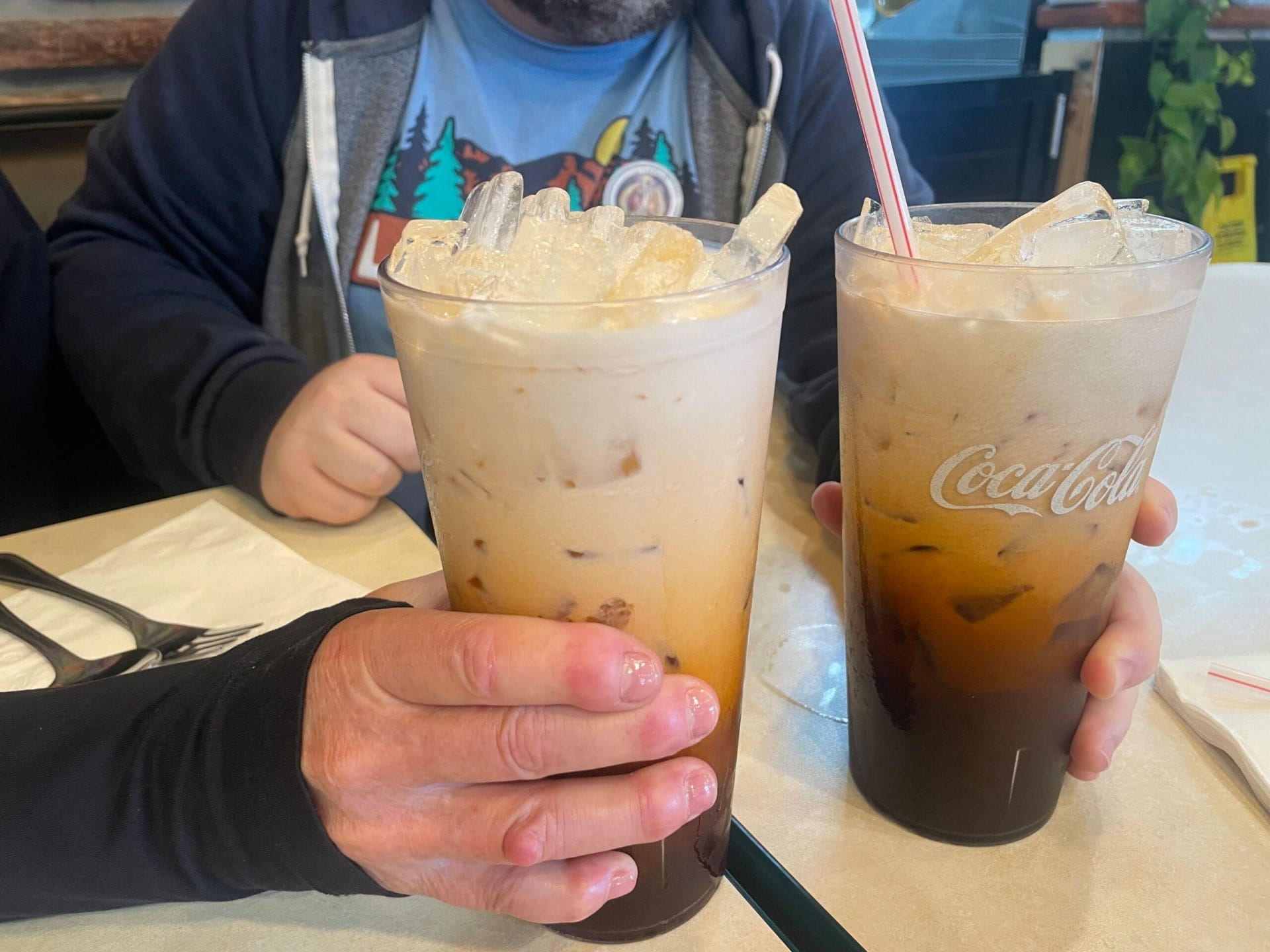
Boonsakul and his family relocated from Los Angeles to co-manage an existing restaurant with some family friends in Gretna on the west bank of the Mississippi River. He found the food being cooked there to “run too sweet and be dumbed down a bit” in terms of spice.
Things quickly went south from there and Boonsakul quit his job at the restaurant, blaming the fact that he was returning to Los Angeles – but opting to open up his “secret” Thai restaurant in Chalmette instead. He wanted to respect the complexity of Thai food and felt he owed better to the local Louisianans’ love for rich, heavy foods – thick Thai curries came to mind. All menu items at Secret Thai, apart from the crab rangoon, come from his mom, who holds court in the back kitchen. Some off-menu options pay tribute to his grandmother, who sold Thai desserts out of a cart in Bangkok.
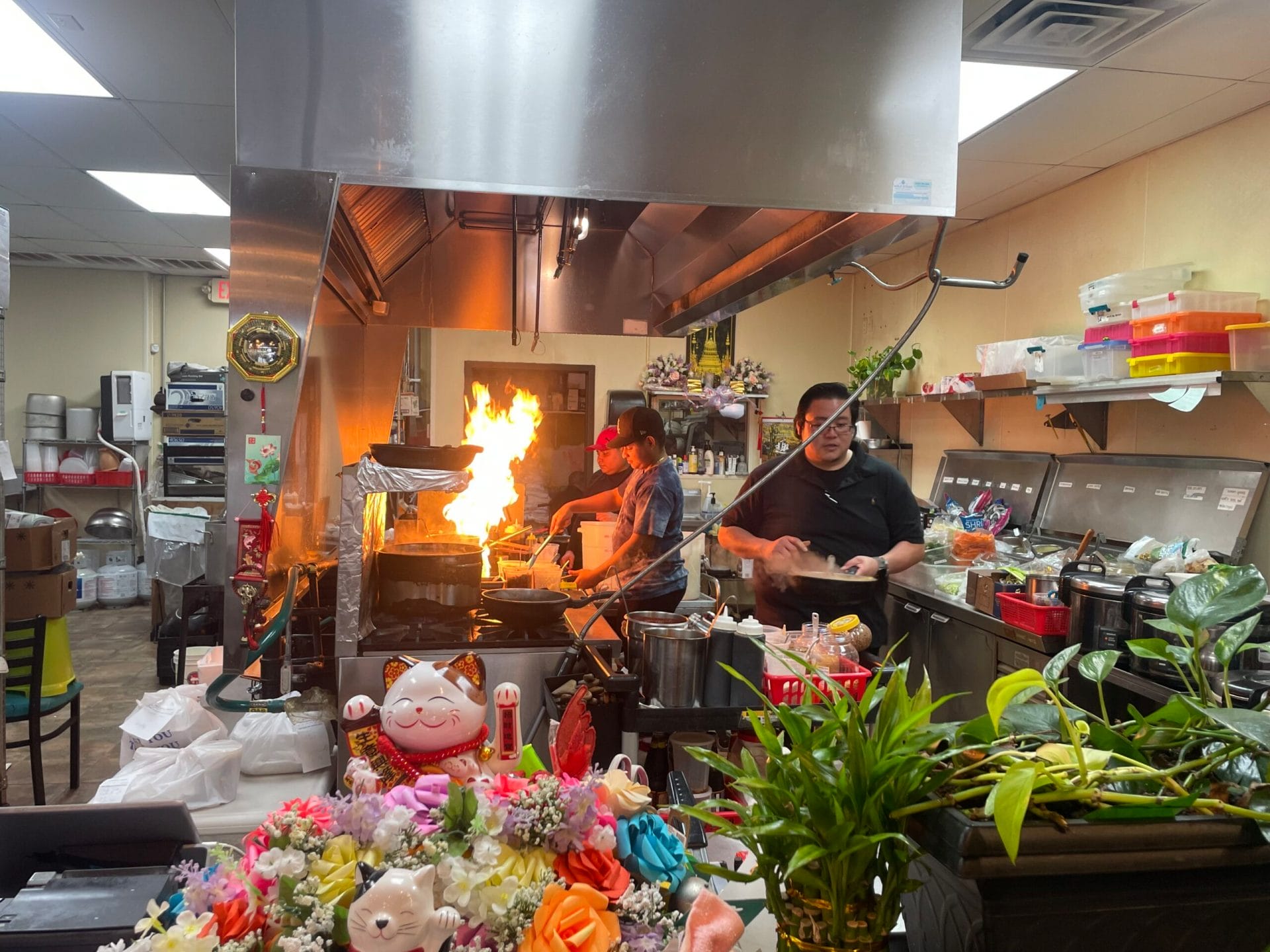
“People always ask why we opened here,” Boonsakul said, in reference to the predominantly working-class environs, where many early patrons were unfamiliar with Thai food. “People always come in asking for Japanese or Chinese food,” he said.
Secret Thai represents a new wave that aims to give [New Orleans] the Thai food they deserve
For the last twenty years, Thai food has experienced a meteoric rise across the United States. The Thai government invested in gastro-diplomacy, launching a program in 2002, to increase the number of Thai restaurants worldwide. Led by its culinary ambassador, the now almost ubiquitous pad Thai, Thai food became a phenomenon that won over the hearts and bellies of many Americans.
New Orleans, as always, was late to the party. When Boonsakul arrived five years ago, there were only a few Thai restaurants. “You’d find a few in the West Bank [of the Mississippi River] and most of them concentrated in the city and Metairie areas,” he recalls. But over the years, Thai cuisine has quietly developed a foothold in the crescent city. “[Since] I’ve been here, there have been Thai pop-ups that turn into restaurants and Thai food trucks turned brick-and-mortars. Even in Chalmette, we now have two restaurants that serve Thai food. Pad Thai is even served down the road in a Vietnamese-owned pizza restaurant.” Secret Thai represents a new wave that aims to give the city the Thai food they deserve, staying true to sophisticated Thai flavors instead of reducing dishes to sweet, starchy mush.
It seems to be working. The restaurant just celebrated its five-year anniversary and was voted the second-best restaurant in the parish through local votes in a weekly newspaper. “People here were so set on [Japanese] hibachi [restaurants], but we now even have nearby Chinese restaurants serving Thai food,” Boonsakul said.
Boonsakul credits Chalmette’s tight-knit community dynamics for his restaurant’s unlikely success. “The first night we ever opened, all the customers knew one another. Being from L.A., this was a strange thing to take in, because there, no one knows anyone,” he recounts. But there is also a clear throughline between Thailand and New Orleans, with similar weather, decadence and a love for seasoning. Like Creole flavors that run on the heavy side, Thai food is heavy on garlic and aromatics.
“It’s not a sprinkle of this and that. It’s a handful or a spoonful,” Boonsakul said.
Also, Boonsakul’s local customers know how to handle spice. “Some more than me,” he confessed. “There’s a guy from the USDA [United States Department of Agriculture] and he only orders a ten,” or double the on-menu heat scale.
We got up to leave and wished the restaurant success. Boonsakul thanked us but said laughing, “We still get calls for pho and I have to explain we aren’t Vietnamese.” Despite its well-deserved success, it seems the restaurant is still one of the best kept secrets around for now.
Joshua LevkowitzJoshua Levkowitz
Published on February 15, 2024
Related stories
February 7, 2016
Queens Culinary Backstreets is delighted to present a year-long monthly series of stories on migrant kitchens from the world’s most diverse place – Queens, NY. Through interviews, photos, maps and short films, the Migrant Kitchens Project will share not only what challenges and joys immigrants face as they create their new home but also how…
July 14, 2019
LisbonWe spotted this colorful display of conservas (canned fish) at one of Lisbon’s finest traditional markets. The tinned fish industry is an old one in Portugal, dating back to the 19th century. The quality of the fish and the olive oil, plus the retro packaging makes it a delicious souvenir or gift.
February 29, 2020
Tokyo | By Lily Crossley-Baxter
TokyoUnusual takes on ramen abound in Tokyo, from carefully balanced chocolate and lamb creations for Valentine’s Day to algae-tinted blue broth, but few leave you with cravings and daydreams lasting for weeks. Adding a quality twist on ramen is a challenge – simplicity is one of the dish’s most vital elements, as with most Japanese…







































